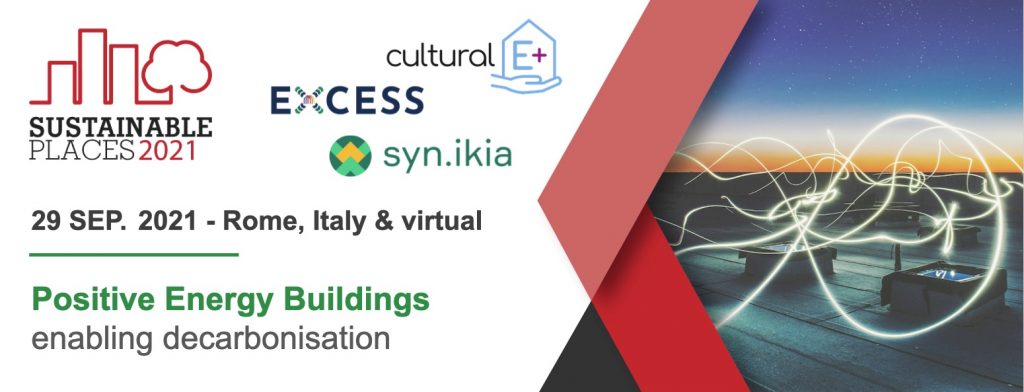"Positive Energy Buildings – Definition" workshop
09:00 - 10:30, 29th September 2021, virtual

This 90-minute virtual workshop was divided into (i) a presentation of the definition of the three projects (30 min), (ii) the point of view of the European Commission (10 min) (iii) a discussion on the different aspects with stakeholders (45 min) and (iii) a wrap up of the conclusions of these discussions (5 min). The outcomes will be presented as the event report in the conference proceedings.
The concept of Positive Energy Buildings (PEB) differs from zero energy buildings in its renewable energy contribution to the surrounding environment, helping to reduce the carbon footprint also from the neighbouring buildings. This means more interaction with the energy grids, which needs to be taken into account in the definition, more than in the case of zero energy buildings. In addition, PEB definition may incorporate energy flexible assets which enable the accommodation of potential energy demand variations due to alterations of the standard context of users/householders and/or within building communities. As the current EU Energy and Climate policy aims for user involvement and empowerment, user needs are more emphasized in PEB definitions that it was in the context of zero energy buildings. Positive Energy Citizens, as PEB occupants, do in various ways shape energy demand dynamics and energy balance outcomes.
The building sector plays an important role in the transition to a climate-neutral society, which is the long-term target for the EU. This objective is at the heart of the European Green Deal and in line with the EU’s commitment to global climate action under the Paris Agreement. Consequently, the international interest in low, zero and beyond zero energy or zero emission buildings has grown and initiatives from several EU and non-EU public authorities, institutions and non-profit organizations are aiming at accelerating transition to a decarbonized building stock.
A variety of definitions for these buildings have been proposed in many slightly different terms, generic and not standardized. A more ambitious step from zero energy buildings is the concept of PEB, which are also contributing to the decarbonisation of the surrounding buildings and built environment, not just minimising their own carbon footprint. It is also worth discussing how this differs from the concept of Positive Energy Districts (PED). In this scenario, a shared PEB definition is needed in order to enable the design, assessment, and documentation of positive energy buildings in different contexts, climates, cultures, and markets, according to need for a cost-effective, just, socially balanced and fair transition.
The definition has been discussed among three sister projects, that were funded under the H2020-EU.2.1.5.2/Call (Cultural-E, EXCESS, syn.ikia). They have identified common points and the differences through a constructive discussion around three main topics: (1) relevant aspects to be considered in the definition of a PEB, like boundaries, balance, embodied energy, dynamic matching, RES; (2) how those aspects are addressed in the various projects contributing to the document; 3) proposed definition of PEB and recommendations, addressing all aspects listed in 1. In order to arrive to a wider agreement on the terminology and boundaries for PEBs, the three projects discussed their findings with a bigger group of stakeholders working on PEBs or related fields.
Workshop Agenda
Welcome Andreas Türk, Joanneum Research, Coordinator of EXCESS, chair for the WS
- Presentation of the three projects
- EXCESS: Andreas Türk, JR
- Cultural-E: Roberto Lollini, EURAC Research
- syn.ikia: Niki Gaitani, NTNU
- Common and discussion points of the PEB definition
Christian Pozza, EURAC Research
- EC position on PEB
Dimitrios Athanasiou, Policy Officer, European Commission, DG ENERGY
- Discussion on the different aspects with stakeholders
Short sessions on key areas:
- Boundaries and balance: Physical boundaries, types of renewables, energy uses (chair: Mia Ala-Juusela, VTT)
- PEBs relation to grids: flexibility, load matching, grid interaction (chair: Jaume Salom, Catalonia Institute for Energy Research – IREC)
- Social aspects: Positive Energy User, affordability, cost optimality, building value (chair: Ivan Luque Segura, RMIT)
- Wrap up of the conclusions; chairs from the sessions above
